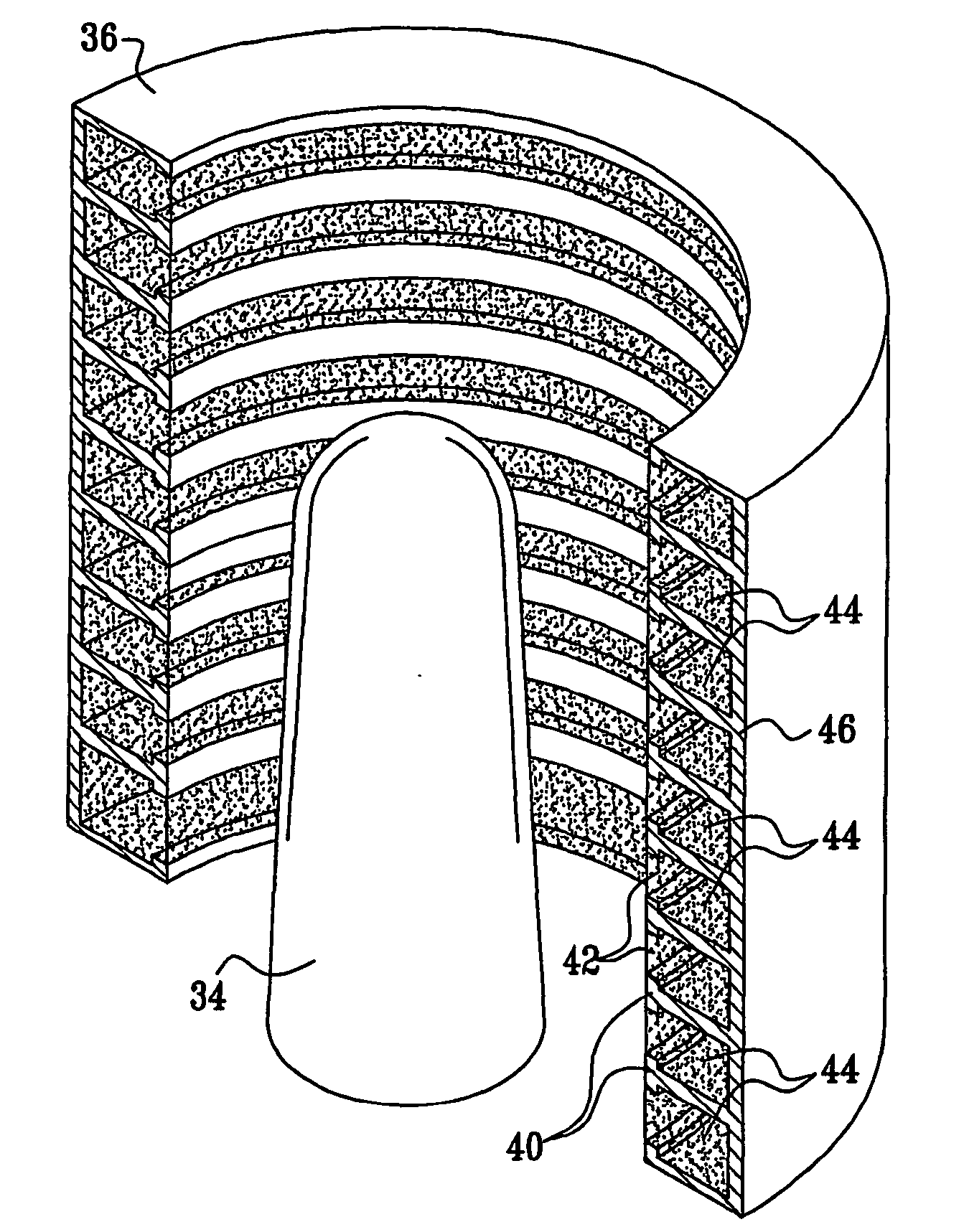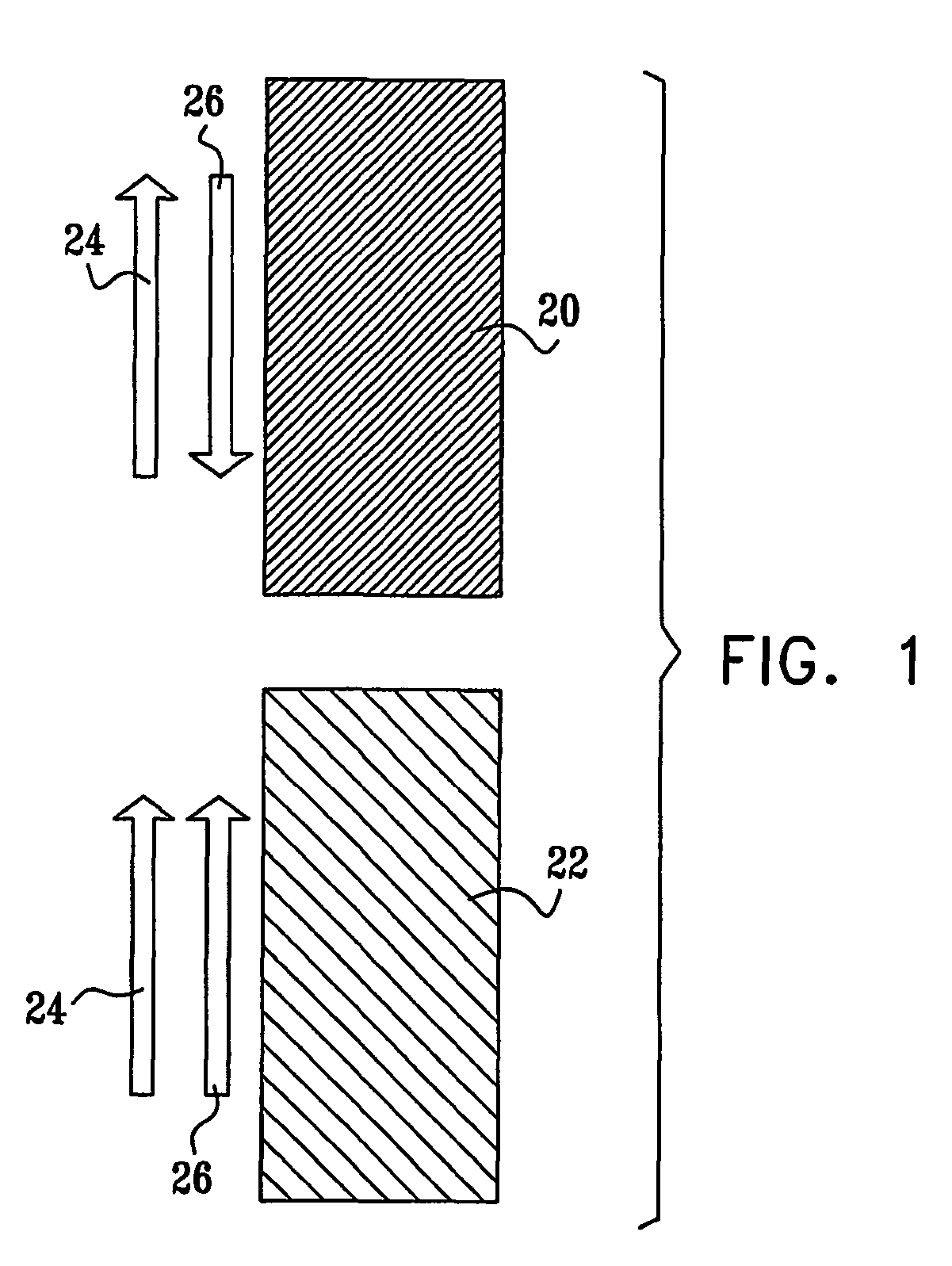Antenna with virtual magnetic wall
a virtual magnetic wall and antenna technology, applied in the direction of antenna earthings, waveguide horns, radiating elements structural forms, etc., can solve the problem that the vmw generates constructive interference of the electric field, and achieve the effect of enhancing the near-field directional characteristics
- Summary
- Abstract
- Description
- Claims
- Application Information
AI Technical Summary
Benefits of technology
Problems solved by technology
Method used
Image
Examples
Embodiment Construction
[0048] Reference is now made to FIG. 1, which is a schematic side view of a perfect electrical conductor 20 and a “perfect magnetic conductor”22, on which an electromagnetic field is incident. A first arrow 24 shows the phase of the incident electric field component tangential to the surface of conductors 20 and 22, while a second arrow 26 shows the phase of the reflected electric field. While electrical conductor 20 reflects the electric field 180° out of phase with the incident field, magnetic conductor 22 reflects the electric field in phase with the incident field. As noted above, “magnetic conductors” are not known in nature. Rather, in preferred embodiments of the present invention, a variety of structures are defined that approximate the behavior of the perfect magnetic conductor by providing the in-phase reflection behavior shown in FIG. 1.
[0049] Whereas electrical conductor 20 short-circuits the incident field (giving a tangential electric field E=0 at the surface of the c...
PUM
 Login to View More
Login to View More Abstract
Description
Claims
Application Information
 Login to View More
Login to View More - R&D
- Intellectual Property
- Life Sciences
- Materials
- Tech Scout
- Unparalleled Data Quality
- Higher Quality Content
- 60% Fewer Hallucinations
Browse by: Latest US Patents, China's latest patents, Technical Efficacy Thesaurus, Application Domain, Technology Topic, Popular Technical Reports.
© 2025 PatSnap. All rights reserved.Legal|Privacy policy|Modern Slavery Act Transparency Statement|Sitemap|About US| Contact US: help@patsnap.com



